|
2023-4-16
骨瓷和纯白釉之后,英国陶瓷业,似乎已经进入了死胡同。但是十八世纪一个看起来很不起眼的英国墨珈艺术陶,使两百年后的英国陶瓷,起死回生,焕发青春,并绚丽多彩,这多少还得益于英国陶瓷的低调和乡土气息,以及美洲新大陆经济文化繁荣和陶瓷艺术上的复兴与兼容并蓄。
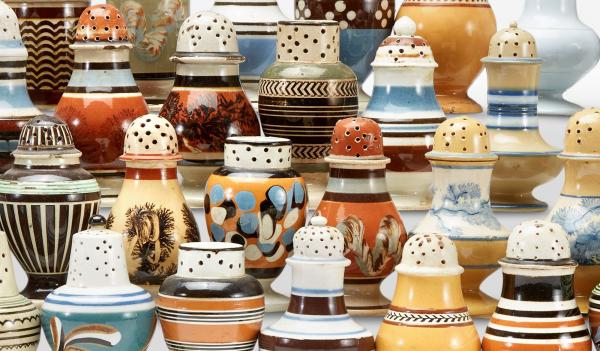
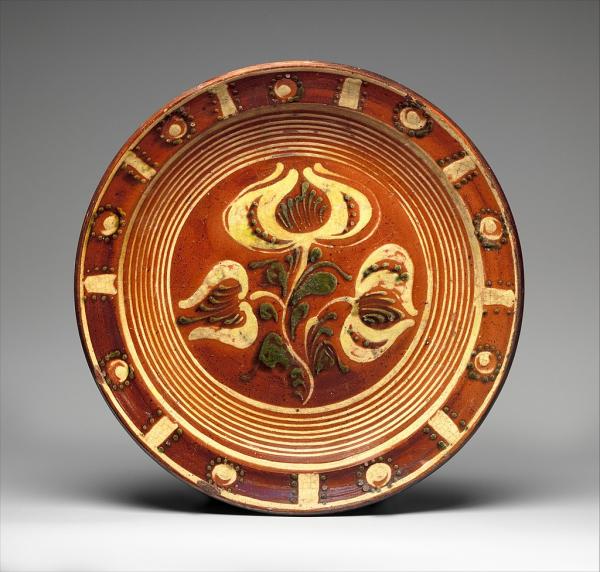
| 十七世纪的美洲红釉陶: Redware - utilizing red to pinkish clay made as early as the late 1600s by American colonists. Red color due to the amount of iron in clay. | 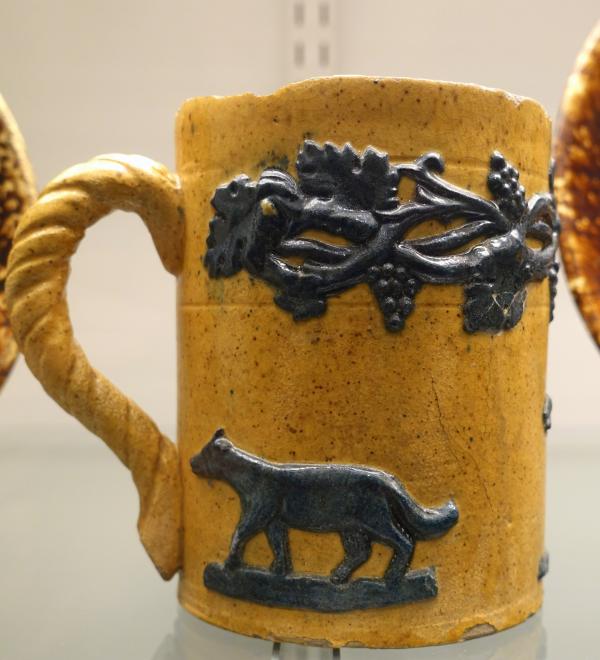
| 十九世纪的北美黄釉陶:Yellowware utilizing buff to yellow-orange clay made between the 1850s to early 1900s in New England, New York and Pennsylvania. Ohio eventually became the center of yellowware pottery manufacturing. | 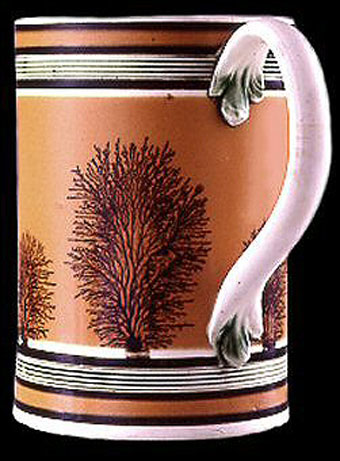
| 十八世纪的英国墨珈艺术陶:Mochaware often referred to as mochaware is a type of dipped ware made in England between 1780 and 1840s for export and was one of the cheapest decorated-ware available. In the old potteries, it was referred to as Mocha or dipped ware. In 1799 it cost sixty percent more than plain creamware. By 1814, it appears on potters' price lists as only twenty percent more, and it stayed that way until the 1840s. |
始于十八世纪中叶的英国墨珈艺术陶,是釉上彩绘陶,是在奶黄釉陶器的外面上,随意绘上一些以弱酸为介质的含有从非洲进口的墨珈玛瑙粉的乱七八糟的颜料,包裹茶叶烟草桔皮柠檬尿酸等等,成一定的几何图桉和线条,成器主要是茶杯奶杯等立件,很少盘子和碟子,价廉物美,粗俗自然,主要是供应英法低端市场和殖民地,最后才登陆北美市场,并融入20世纪以美国为主导的陶瓷装饰艺术的文化复兴。
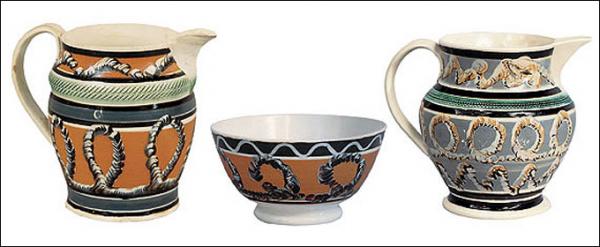
Mochaware was first made by William Adams of the Greengates factory, Tunstall, England (1745-1805). Along with his blue-painted and enameled pottery, it brought Adams significant notoriety. This style of pottery, which could be sold at a moderate price, found considerable favor in some quarters from its very quaintness. It was white or creamware, somewhat rudely decorated with seaweed or tree-like effects, in black or dark brown, on a pale colored zone of pale blue or light brown outlined with narrow bands of dark colors. The name mocha was derived from mukha, a precious stone, a variety of moss agate, found near the town of Mocha, in Arabia. English factories were turning out quantities of mocha, almost always hollowware- mugs and pitchers as opposed to flat pieces like plates.
Mochaware continued to be made by his Adams cousin, William Adams (1748-1831) of the Brick House, Burslem who started a large new factory at Sneyd Green, Cobridge Hall in 1770 and remained here until 1831. Burslem was the center and principal seat of the Potteries in the seventeenth century. It was still being made in the Adams factory as late as 1903. Mochaware was also made in other British factories, among them Bristol and in the Cambrian Pottery in Swansea, South Wales Pottery at Llanelly, Leeds and Hull in Yorkshire, and in Glasgow, Scotland where the common drinking cups, bowls, and mugs were made as early as 1823. The grounds were usually brown, green, or yellow decorated with ornamental rings. Mochaware in classical shapes and distinctive greens and yellows was also made in four French factories after a group of English potters emigrated across the Channel in the early 1800s. A fair amount of French mocha was exported to Louisiana. However, it did not appear in America until later.
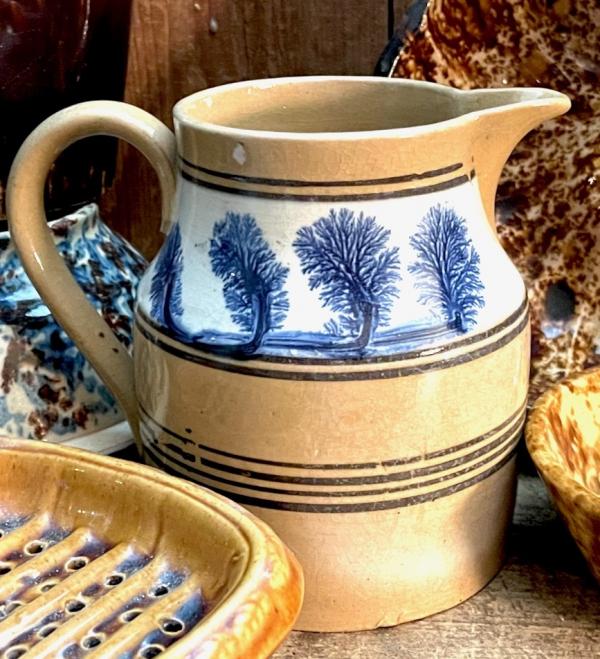
美国版的墨珈艺术彩绘,直接施在黄釉陶器上
The British made a great deal of mochaware specifically for the American market. Large quantities were imported and it was quite inexpensive - very affordable for the average American. American potters started to make mocha ware in the 1850s, almost always on yellowware bodies, banded in black and white. There were American makers in Maryland, Pennsylvania, and Virginia. American-made goods with thicker and heavier, with murkier designs.
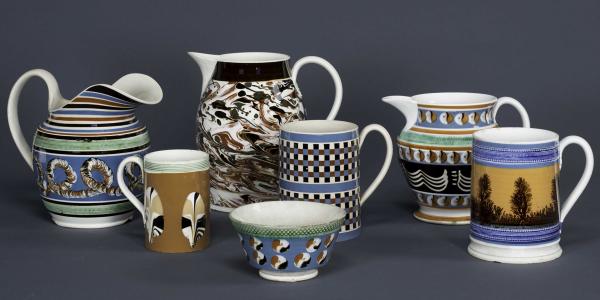
Shelburne美术馆里收藏的英国墨珈艺术陶
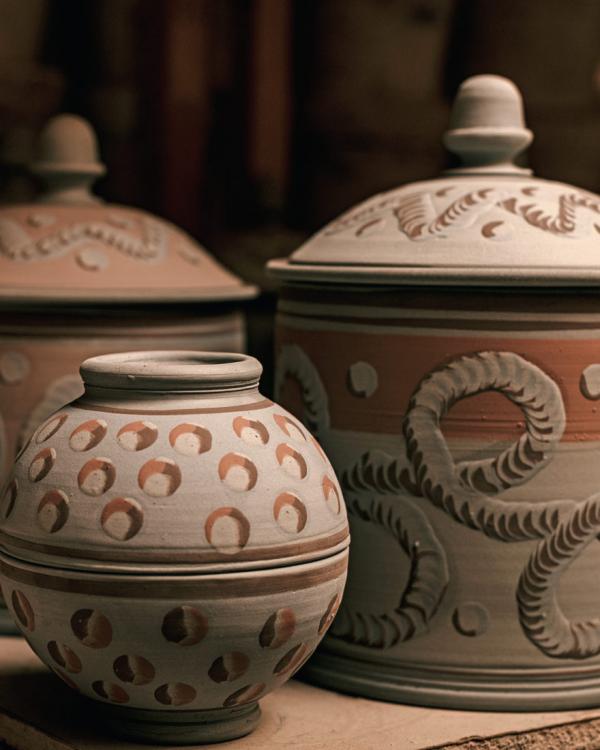
1880-1920年,随着全球工艺市场的升温,美国的陶瓷与玻璃厂商开始大量生产装饰艺术品,这一时期的设计运动融合了高超的手工技艺、自然主义的装饰倾向及人们对美好家居生活的向往,这里面,墨珈艺术陶居功甚伟。
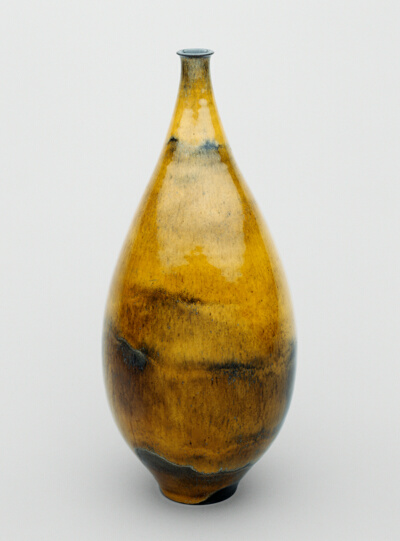
美国现代陶瓷装饰艺术品,猫眼石釉,芝加哥美术学院博物馆藏品
|
|
